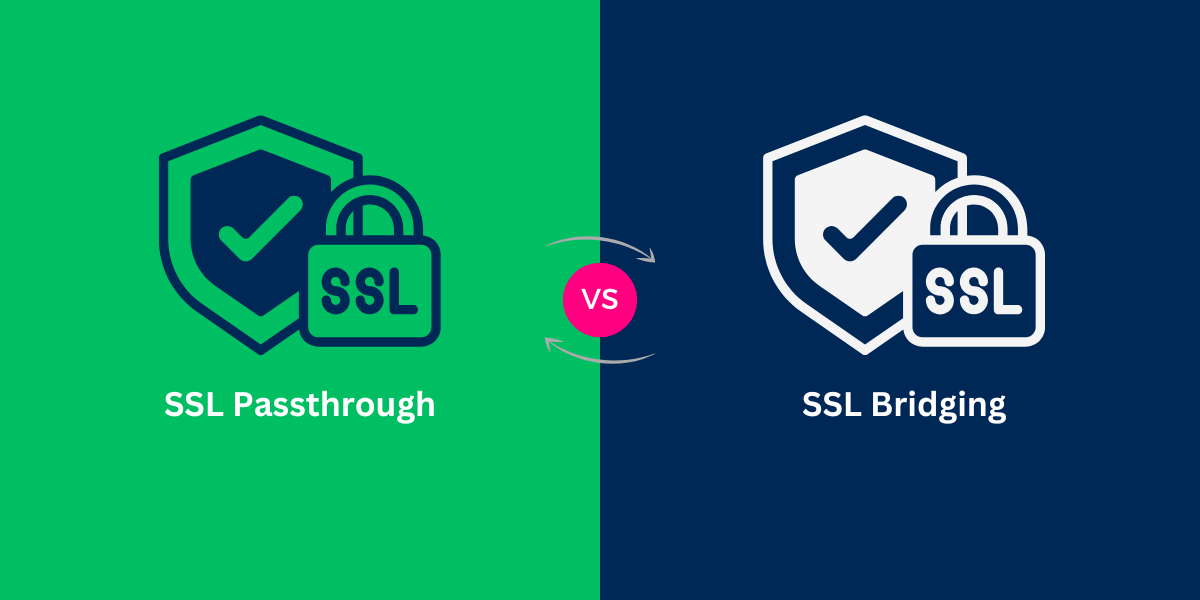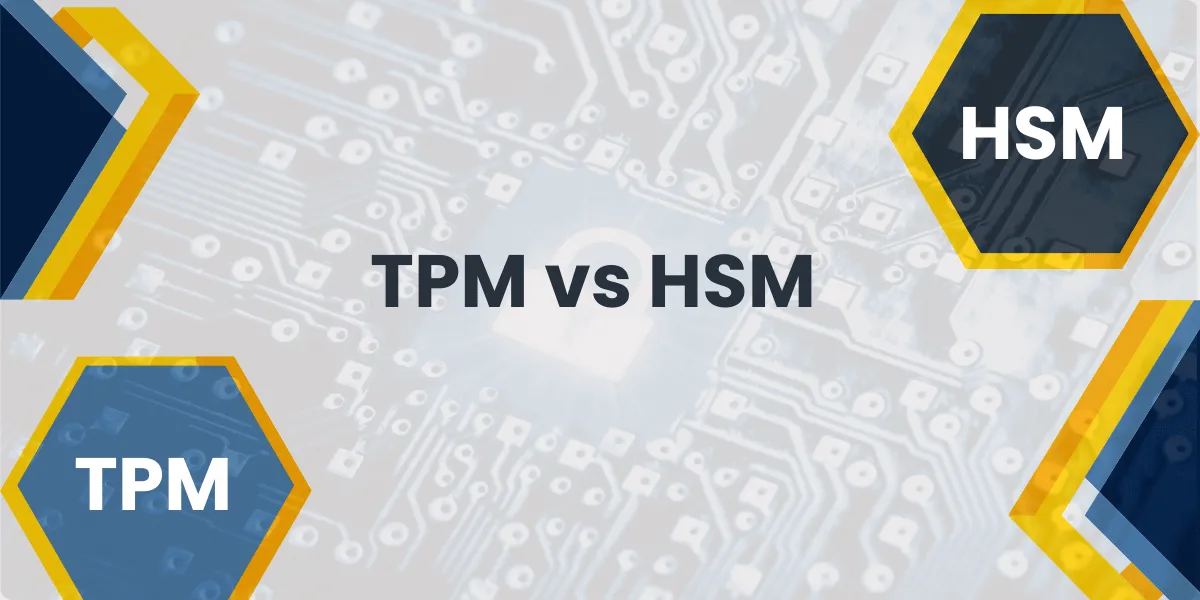SSL Configuration Methods Overview
Key Difference: SSL passthrough maintains the original encrypted connection throughout the entire path, while SSL bridging creates two separate encrypted connections – one from client to load balancer, and another from load balancer to backend server.
Deep Dive into SSL Passthrough and SSL Bridging Methodologies
SSL Passthrough
SSL passthrough is a method where the load balancer forwards encrypted SSL/TLS traffic directly to backend servers without terminating or decrypting the connection. The load balancer operates at Layer 4 (Transport Layer) and treats the traffic as opaque TCP data.
- No decryption occurs at the load balancer level
- End-to-end encryption is maintained throughout the connection
- SSL certificates are installed only on backend servers
- TCP mode is used for traffic forwarding
SSL Bridging
SSL bridging combines aspects of both SSL termination and passthrough. The load balancer decrypts incoming SSL traffic, processes and inspects it, then re-encrypts the data before sending it to backend servers.
- Dual encryption decrypt at load balancer, re-encrypt to backend
- Traffic inspection capabilities are available
- SSL certificates required on both load balancer and backend servers
- Application layer processing is possible
Comprehensive Feature-by-Feature Comparison: SSL Passthrough vs SSL Bridging Analysis
| Feature | SSL Passthrough | SSL Bridging |
|---|---|---|
| Encryption Status | End-to-end encryption maintained | Dual encryption (decrypt/re-encrypt) |
| Certificate Management | Backend servers only | Load balancer + backend servers |
| Traffic Inspection | Not possible | Full application-layer inspection |
| Load Balancer CPU Usage | Low (no encryption/decryption) | High (dual encryption operations) |
| Latency | Lower (minimal processing) | Higher (encryption overhead) |
| Security Level | Highest (no intermediate decryption) | High (controlled decryption point) |
| Web Application Firewall | Cannot inspect encrypted content | Full WAF capabilities available |
| Content Compression | Not possible at load balancer | Supported |
| Session Management | Limited to IP-based routing | Full session stickiness options |
Performance Statistics, Industry Benchmarks & Real-World Implementation Data Analysis
85%
Percentage of websites worldwide using HTTPS as of 2024, making SSL configuration choices increasingly critical for infrastructure teams.
35.9%
Percentage of surveyed sites with flawed SSL implementation practices, highlighting the importance of proper SSL configuration method selection.
3.5x
SSL handshake latency overhead compared to plain TCP connections, emphasizing the performance considerations in SSL method selection.
Detailed Performance Impact Analysis: CPU, Memory, Throughput and Latency Comparison Metrics
| Metric | SSL Passthrough | SSL Bridging | Impact |
|---|---|---|---|
| CPU Utilization | 5-10% | 15-30% | Bridging requires 2-3x more CPU |
| Memory Usage | Low | Medium-High | Certificate storage + session management |
| Throughput | Near line-rate | 80-90% of line-rate | Encryption/decryption overhead |
| Connection Setup Time | 1x baseline | 1.2-1.5x baseline | Additional processing delay |
Network Architecture Diagrams: Visual Data Flow Representations and Infrastructure Design Patterns
SSL Passthrough Flow
Client → [Encrypted] → Load Balancer → [Encrypted] → Backend Server
Single encrypted tunnel maintained end-to-end
SSL Bridging Flow
Client → [Encrypted] → Load Balancer → [Decrypt/Process/Re-encrypt] → Backend Server
Two separate encrypted connections with inspection point
Advantages and Disadvantages of SSL Passthrough
Advantages of SSL Passthrough
- Maximum Security: True end-to-end encryption with no intermediate decryption points
- Low Resource Usage: Minimal CPU and memory requirements on load balancer
- High Performance: Near line-rate throughput with minimal latency
- Simple Certificate Management: Certificates only needed on backend servers
- Compliance Friendly: Ideal for strict regulatory requirements (HIPAA, PCI-DSS)
- No Content Inspection: Cannot examine application-layer traffic for security threats
- Limited Load Balancing: Restricted to basic Layer 4 routing algorithms
- No WAF Integration: Web Application Firewall cannot inspect encrypted content
- Session Management: Limited session stickiness options
- Troubleshooting Complexity: Difficult to debug application-layer issues
Advantages and Disadvantages of SSL Bridging
- Full Traffic Inspection: Complete visibility into application-layer data
- Advanced Security Features: WAF, DDoS protection, content filtering capabilities
- Intelligent Routing: Content-based load balancing and session management
- Performance Optimization: Compression, caching, and content manipulation
- Monitoring & Analytics: Detailed application performance metrics
- Higher Resource Requirements: Significant CPU and memory overhead
- Complex Certificate Management: Certificates needed on multiple tiers
- Potential Security Risk: Intermediate decryption point could be targeted
- Increased Latency: Additional processing time for encryption/decryption
- Compliance Concerns: May not meet strict end-to-end encryption requirements
Real-World Use Case Scenarios: Industry-Specific Implementation Guidelines and Decision Criteria
When to Choose SSL Passthrough
- Financial Services: Banking applications requiring strict end-to-end encryption
- Healthcare Systems: HIPAA-compliant applications handling sensitive patient data
- Government Applications: Systems requiring the highest security classifications
- High-Performance APIs: Applications where minimal latency is critical
- Simple Web Applications: Static content or applications not requiring traffic inspection
- Cost-Sensitive Environments: Deployments with limited processing resources
When to Choose SSL Bridging
- E-commerce Platforms: Sites requiring WAF protection and fraud detection
- Content Management Systems: Applications needing content filtering and modification
- API Gateways: Services requiring request/response transformation and validation
- Multi-tenant Applications: Systems needing tenant-based routing and security policies
- Analytics-Heavy Applications: Platforms requiring detailed traffic analysis
- Microservices Architecture: Complex applications needing service mesh capabilities
Step-by-Step Implementation Guide: Configuration Procedures, Best Practices and Technical Considerations
SSL Passthrough Implementation
- Load Balancer Configuration: Configure TCP mode with SNI (Server Name Indication) support
- Backend Server Setup: Install and manage SSL certificates on all backend servers
- Health Checks: Implement TCP-based health monitoring
- Monitoring: Focus on connection-level metrics and server availability
- Scaling Considerations: Plan for certificate distribution and renewal across backend servers
SSL Bridging Implementation
- Load Balancer Configuration: Install certificates and configure decryption/re-encryption
- Security Policies: Implement WAF rules, rate limiting, and access controls
- Performance Tuning: Optimize cipher suites and session reuse settings
- Certificate Management: Establish automated certificate renewal processes
- Monitoring: Implement comprehensive application-layer monitoring and alerting
Configuration Tip: Many modern load balancers support hybrid approaches, allowing different SSL methods for different virtual hosts or applications within the same infrastructure.
Security Implications
| Security Aspect | SSL Passthrough | SSL Bridging |
|---|---|---|
| Data Exposure Risk | Minimal – no intermediate decryption | Medium – decrypted at load balancer |
| Attack Surface | Reduced – limited inspection capabilities | Expanded – more processing components |
| DDoS Protection | Basic – connection-level filtering only | Advanced – application-layer filtering |
| Malware Detection | Not possible – encrypted content | Full scanning capabilities |
| Compliance Support | Excellent – true end-to-end encryption | Good – with proper controls |
Best Security Practices
- Certificate Security: Use strong key lengths (minimum 2048-bit RSA or 256-bit ECC)
- Cipher Suite Selection: Disable weak ciphers and protocols (SSL 3.0, TLS 1.0)
- Perfect Forward Secrecy: Enable PFS to protect past communications
- Certificate Pinning: Implement HPKP or certificate pinning for critical applications
- Regular Updates: Maintain current SSL/TLS libraries and load balancer firmware
Decision Framework & Conclusion
| Priority | Recommended Method | Reasoning |
|---|---|---|
| Maximum Security | SSL Passthrough | True end-to-end encryption, no intermediate decryption |
| Application Security | SSL Bridging | WAF, content filtering, malware detection capabilities |
| High Performance | SSL Passthrough | Lower latency, reduced processing overhead |
| Advanced Features | SSL Bridging | Content manipulation, intelligent routing, analytics |
| Regulatory Compliance | SSL Passthrough | Strict end-to-end encryption requirements |
| Operational Visibility | SSL Bridging | Detailed monitoring and troubleshooting capabilities |
Final Thoughts
Choose SSL passthrough for maximum security and performance in environments with strict compliance requirements. Select SSL bridging when you need advanced security features, content inspection, or operational visibility into application traffic. Many organizations use a hybrid approach, implementing different methods based on application sensitivity and functional requirements.
The decision between SSL passthrough and SSL bridging ultimately depends on your specific security requirements, performance needs, and operational complexity tolerance. Both methods provide secure communication, but they serve different architectural goals and use cases in modern network infrastructure.
Frequently Asked Questions (FAQs)
What is SSL passthrough?
SSL passthrough lets encrypted traffic flow directly from client to server without decryption. The load balancer forwards the encrypted data without processing it. This method maintains end-to-end encryption and reduces processing overhead.
What is SSL bridging?
SSL bridging terminates the client’s SSL connection at the load balancer. The load balancer creates a new SSL connection to the backend server. This allows the load balancer to inspect and modify the traffic between client and server.
Is SSL passthrough more secure than SSL bridging?
SSL passthrough provides higher security because data remains encrypted throughout transmission. SSL bridging exposes decrypted data at the load balancer. The choice depends on specific security requirements and performance needs.
What are the performance differences between SSL passthrough and bridging?
SSL passthrough offers better performance because it requires less processing power. SSL bridging needs more resources for encryption and decryption. The performance impact varies based on traffic volume and server capacity.
When should I use SSL passthrough vs SSL bridging?
Use SSL passthrough for applications requiring strict end-to-end encryption. Choose SSL bridging when content inspection, manipulation, or application-layer processing is needed. Consider security requirements and performance goals.
Can SSL passthrough and bridging affect application compatibility?
SSL passthrough works with all SSL/TLS versions and cipher suites. SSL bridging may limit protocol versions and cipher options. Check application requirements before selecting either method.



